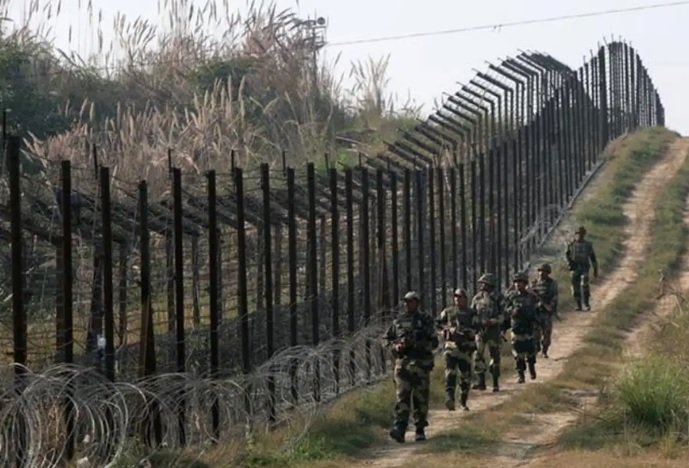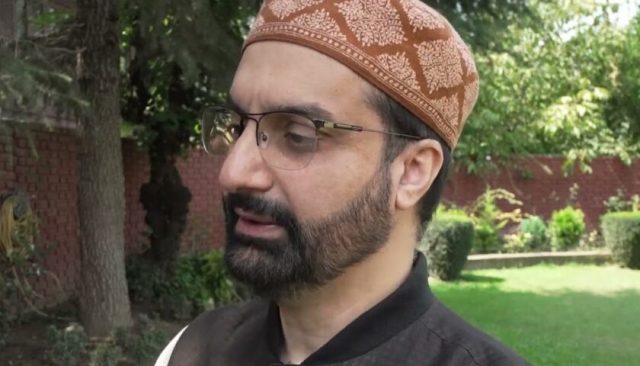Unrelenting Fire: Pakistan’s Border Shelling Enters Ninth Day, Raising Alarm Along LoC
Srinagar 04 May 2025: For the ninth consecutive day, the fragile peace along the Line of Control (LoC) in Jammu and Kashmir has been shattered by persistent cross-border firing initiated by Pakistani troops. This sustained period of unprovoked aggression, involving the use of small arms across multiple sectors, has raised concerns about escalating tensions in the already volatile region. While officials have confirmed that there have been no casualties in these latest border skirmishes, the continuous nature of the firing underscores a worrying pattern of ceasefire violations and its potential impact on the lives and security of border communities.
A Relentless Barrage: Nine Consecutive Nights of Ceasefire Violations
The current spate of cross-border firing began nine nights prior to Saturday, marking a prolonged period of instability along the LoC. This sustained aggression stands in stark violation of the ceasefire agreement that both India and Pakistan have committed to. The fact that this has continued for over a week indicates a potential shift in tactics or a deliberate attempt to maintain pressure along the border.
While the majority of the firing incidents have been concentrated along the LoC, officials noted a single instance of firing along the International Border (IB). This isolated incident raises questions about whether the pattern of violations is expanding beyond the traditional areas of conflict along the LoC, potentially signaling a broader strategy of border provocation.
Geographic Spread: Targeting Multiple Sectors Along the LoC
The defense spokesman confirmed that during the night of May 2nd and 3rd, Pakistani Army engaged in unprovoked small arms fire across the Line of Control in several key sectors of Jammu and Kashmir. These areas included Kupwara, located in the northern part of the valley, the Uri sector, known for its rugged terrain and strategic importance, and the Akhnoor sector, situated further south towards the Jammu region. The targeting of these diverse locations along the LoC suggests a coordinated effort rather than isolated incidents.
The simultaneous firing in these geographically separated areas puts pressure on Indian security forces across a wider front and can disrupt the daily lives of civilians residing in these border regions. The need for constant vigilance and response can also strain resources and manpower.
India’s Response: Prompt and Proportionate Action
In response to Pakistan’s unprovoked firing, the Indian Army has maintained a stance of prompt and proportionate retaliation. A defense spokesman affirmed that Indian troops effectively engaged the Pakistani positions, ensuring a measured response to the aggression. This approach aims to deter further violations while avoiding unnecessary escalation.
The principle of proportionate response is crucial in managing border tensions. It allows the Indian Army to defend its positions and protect civilian populations without triggering a larger conflict. However, the continued firing from the Pakistani side tests this approach and raises concerns about the effectiveness of de-escalation efforts.
The Human Cost: Beyond Immediate Casualties
While it is a relief that no casualties have been reported in the immediate aftermath of these nine days of firing, the prolonged instability along the LoC carries significant human costs that extend beyond immediate loss of life.
- Disruption of Daily Life: For communities living in the border areas, continuous firing creates an environment of fear and uncertainty. Daily routines are disrupted, agricultural activities are hampered, and children’s education can be affected as residents are forced to seek shelter.
- Economic Impact: Border skirmishes can severely impact the local economy. Trade routes may be disrupted, and the sense of insecurity can deter investment and development in these already vulnerable areas.
- Psychological Toll: Living under the constant threat of cross-border firing can take a significant toll on the mental health and well-being of the residents. Anxiety, stress, and a sense of insecurity can become pervasive.
- Displacement and Migration: In more severe instances of border conflict, prolonged firing can lead to the displacement of communities, forcing people to leave their homes in search of safety.
Analyzing the Pattern: Why the Persistent Violations?
The sustained nature of these ceasefire violations raises questions about the underlying motivations and objectives. Several factors could be contributing to this pattern:
- Maintaining Pressure: The firing could be a tactic to keep the border region volatile and maintain pressure on Indian security forces. This can stretch resources and divert attention from other areas.
- Supporting Infiltration Attempts: Cross-border firing can be used as a cover for attempts by militants to infiltrate into Indian-administered Kashmir. The firing provides a diversion while infiltrators try to cross the LoC under the cover of darkness and chaos.
- Retaliation or Signaling: The firing could be a form of retaliation for perceived actions by Indian security forces or a way of signaling displeasure with certain policies or developments.
- Internal Dynamics in Pakistan: Political or internal dynamics within Pakistan could also be influencing the approach towards the border.
- Exploiting Regional Tensions: Existing regional tensions or geopolitical developments could be exploited to escalate tensions along the LoC.
The Ceasefire Agreement: A Commitment in Jeopardy?
The repeated violations of the ceasefire agreement raise serious questions about its viability and the commitment of both sides to upholding it. The ceasefire, intended to bring stability to the border region, appears to be increasingly fragile in the face of these persistent incidents.
The lack of adherence to the agreement undermines trust between the two countries and makes any progress towards peaceful dialogue and resolution of outstanding issues even more challenging.
International Implications: A Region Under Scrutiny
The ongoing tensions along the LoC are a matter of international concern. The region remains a flashpoint, and any escalation has the potential to draw wider international attention and intervention. The continuous ceasefire violations contribute to the perception of instability in South Asia.
The Way Forward: De-escalation and Dialogue
Addressing the persistent border firing requires a multi-pronged approach that prioritizes de-escalation and dialogue.
- Enhanced Communication Channels: Strengthening communication channels between military officials on both sides is crucial for addressing incidents promptly and preventing misunderstandings from escalating.
- Recommitment to Ceasefire: Both India and Pakistan need to reiterate their commitment to the ceasefire agreement and take concrete steps to ensure its implementation.
- Diplomatic Engagement: Sustained diplomatic engagement at various levels is necessary to address the underlying issues that contribute to border tensions.
- Confidence Building Measures: Implementing further confidence-building measures can help to reduce mistrust and create a more stable environment along the border.
- Local Community Engagement: Engaging with local communities in the border regions and addressing their concerns can contribute to a more peaceful environment.
The ninth consecutive day of border firing serves as a stark reminder of the fragility of peace along the Line of Control. While immediate casualties have been avoided, the sustained aggression carries significant human and strategic costs. Addressing this persistent issue requires a firm but measured response from India, coupled with renewed efforts towards de-escalation and meaningful dialogue with Pakistan to ensure lasting peace and stability in the region.




